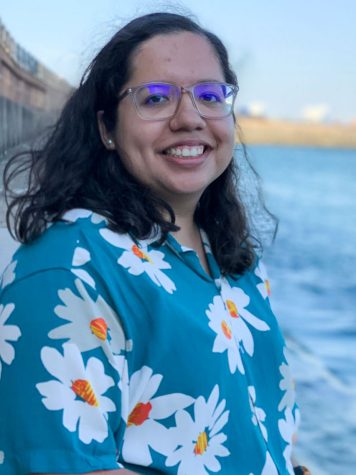MSU celebrates Día de los Muertos
November 4, 2021
Día de los Muertos or Day of the Dead is a holiday that honors those who have died. The holiday originated in Mexico and is celebrated on Nov. 1st and 2nd. Nov. 1 is el día de los innocentes or day of the children and Nov. 2 is Día de los Muertos. MSU celebrated both days beginning with a lecture about the origins and traditions of Day of the Dead which followed with the MSU Choir singing at the altar. On the second day, Día de los Muertos was celebrated with food and different activities in the Clark Student Center Atrium.
“Today is more of a celebration, kind of getting together with family or friends and just eating, face painting little things around here. Basically celebrating Día de los Muertos,” Ruby Garrett, assistant director of MOSAIC Cross-Cultural Center, said.
Attendees were able to get their faces painted in the style of Catrina, crafts, play Lotería a traditional game similar to bingo and eat. The foods featured were tamales, hot chocolate and pan de muerto or bread of the dead. There was also an altar set up that would be on display all week at the CSC Atrium to pay respect to loved ones.
“We’re celebrating Día de los Muertos and providing some cultural experience for the students and the faculty here that maybe do have some experience with it and maybe don’t have some experience with it,” Angelina Chapa, volunteer representing the Zavala Amo Leer committee, said. “They’ve included a lot of the elements that are in a traditional Día de los Muertos event like the altar the traditional food like tamales and pan de muerto and we have some fun face painting…we’re just doing [what was originally a calavera mask] as a coloring decorating activity its something that is a very traditional and specific artifact from Día de los Muertos so that’s why we included it here.”
According to Chapa, Zavala provided the face painting and the crafts table. This event was a collaboration between the Latinx STAND Council, Organization of Hispanic Students, MOSAIC Peer Educators, MOSAIC, Sigma Lambda Alpha, Zavala and Spanish Club.
“The MOSAIC office hosted [the event] and they asked organizations like SLA, OHS, the Latinx STAND Council from the MOSAIC office also contributed to help…We volunteered to serve pan de muerto and we also volunteered to host lotería for students and faculty and the community members,” Sky Barron, vice president of OHS and mass communication senior, said. “We just wanted to have a little celebration on campus and let other students who aren’t of Hispanic background to come check out the event and learn what Día de los Muertos is and dedicate some time to loved ones that they’ve lost.”
Barron says the event helps those that are not part of cultures that celebrate Día de los Muertos become more culturally aware and learn about other communities on campus. Miranda Salinas, mass communication senior, who has only celebrated Día de los Muertos on campus, says hosting events such as this one helps students keep a bit of their culture while on campus.
“Every culture has there own way of celebrating life or celebrating death, and I think it’s important to include all of those cultures so that everyone feels somewhat either at home or just comfortable here and not miss that part of them while they’re [at MSU] away from their homes,” Salinas said.
Like Salinas, Jennifer Martinez, business management freshman, had never celebrated Día de los Muertos at home. Martinez attended the event because she didn’t want to celebrate Día de los Muertos alone; she is far away from her family and wanted to be surrounded by others taking part in the holiday.
“It’s really nice there are a lot of people that I miss a lot and I want to feel like they’re here with me you know? Visiting me today, give them a chance to kind of catch up,” Martinez said.
Martinez’s family does not celebrate Día de los Muertos which was part of the reason she attended the event. The same reason brought Jasmine Obiedo, kinesiology senior, who was not too familiar with Día de los Muertos.
“I feel like there’s a lot of Latinos or Hispanics this is part of their culture but growing up, like me, they never celebrated [Día de los Muertos] so they don’t know too much about it. So I feel like this is a way to get in touch with the culture,” Obiedo, said.
Obiedo used this event as a chance to learn more about her culture and the history behind Día de los Muertos, a celebration that combines indigenous Aztec rituals with Catholicism. Specific aspects of Día de los Muertos such as the sugar skulls have become popular in the U.S. but many don’t know the meaning behind those skulls says Garrett.
“Any observance that’s going on especially for any community, especially for people that celebrate Halloween people forget about Día de los Muertos. I think right now in just the United States, all of a sudden the sugar skulls, calaveras kind of happened and I don’t know if a lot of people know why. We kind of just wanted to highlight and say there’s a reason why you see all of that in Target or Sam’s or whatever and there’s a reason why it’s a holiday and why it’s very special to Hispanic culture,” Garrett said.






